The Construction Method of Self Drilling Anchor Bolt in Sandy Gravel Deep Excavation
Time:2015-10-22View:
Introduction
With the rapid expansion of urban underground spaces and the construction of large-scale underground retail spaces, deep excavation projects have become increasingly common. Traditional deep excavation retaining methods often struggle to meet the stability requirements of these extensive underground structures. This issue is particularly pronounced in the sandy cobble stratum, where the ratio of finishing gas holes is low, leading to higher pressures during grouting and anchoring processes, ultimately driving up construction costs.
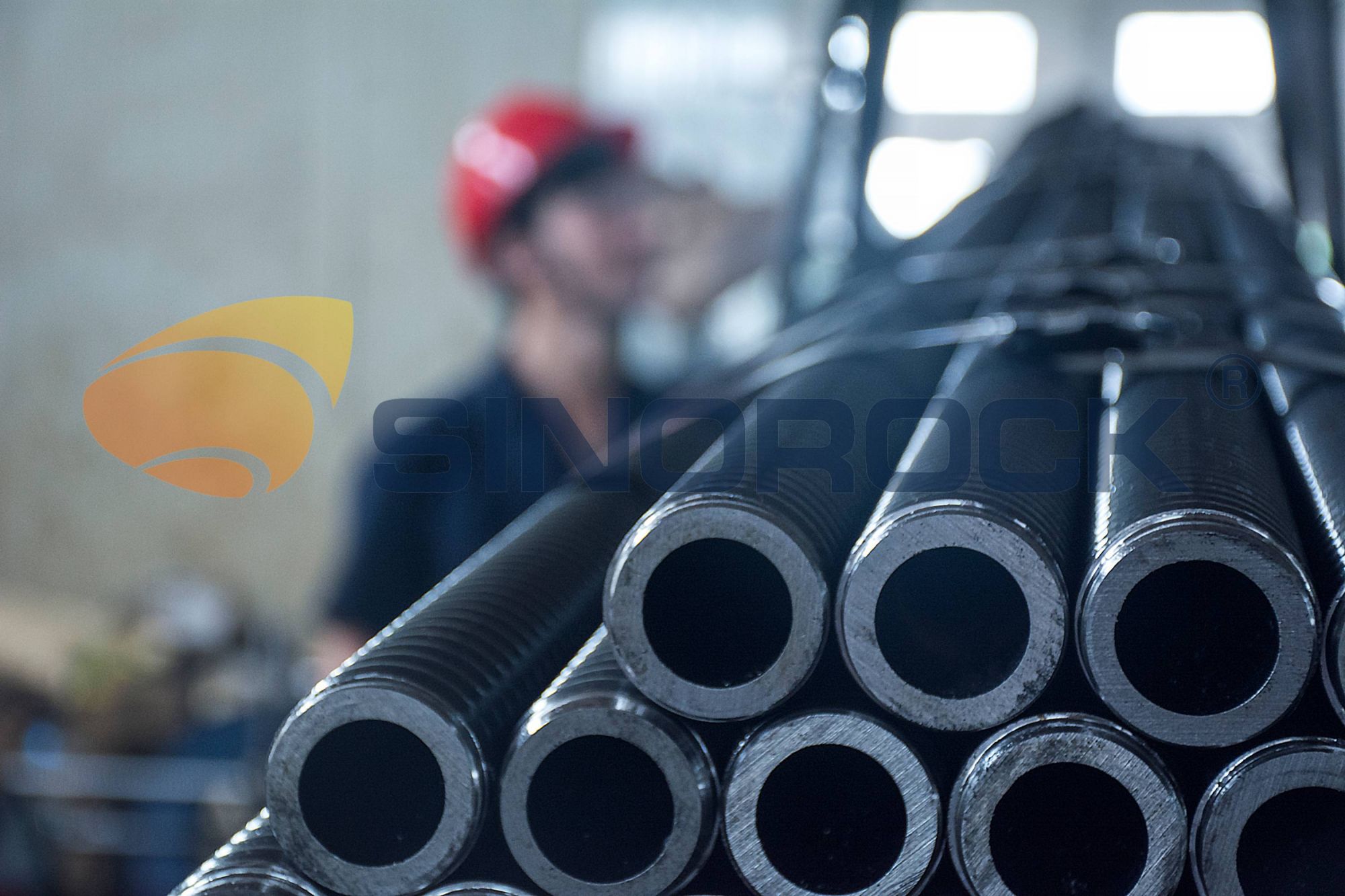
In response to these challenges, the introduction of the self-drilling anchor bolt technique from foreign countries has proven to be a game-changer. This innovative rock-soil anchoring method excels in complex geological conditions, especially in weak soil and sandy cobble stratum. Moreover, successful examples of its application in domestic railway construction further testify to its reliability and effectiveness.
Features of the Construction Method
The self-drilling hollow injection anchor bolt system is a cutting-edge technology comprising a hollow anchor bar, nut, plate, coupler, drill bit, centralizer, and the anchor bar that can be cut and lengthened by coupling according to specific project requirements. This anchor system integrates drilling, grouting, and anchoring functions while ensuring robust anchoring in even the most challenging ground conditions.
Key features of the self-drilling anchor bolt system include
1. Safety, reliability, and time-saving benefits.
2. Simple installation and operation procedures.
3. Versatility with a range of drill bits available for various ground conditions.
4. Synchronized grouting during or after drilling to effectively fill fractures.
5. Flexibility with anchor bars that can be cut and lengthened, ideal for narrow spaces.
6. Enhanced bonding stress compared to smooth steel pipes, thanks to continuous R-thread and T-thread technology.
An Application Case: Beijing Subway Line 4
A prominent example of the successful application of the self-drilling anchor bolt system can be found in the construction of Beijing Subway Line 4, situated in Dongzhuang Park, Fengtai District. This ambitious project commenced on November 30, 2005, with the South Underground Station designed to integrate seamlessly with the Beijing South Railway Station. The metro station, spanning the second and third floors underground, measures 150.3 meters in length, 125 meters in width, and approximately 10 meters in height. The total excavation depth reaches about 30 meters, encompassing a construction area of around 32,203 square meters. In this vast project, the self-drilling anchor bolt system covered an impressive area of 3,200 square meters and successfully supported the sandy cobble stratum during construction.
Detailed Construction Process
1. Site Assessment and Analysis
Before the implementation of the self-drilling anchor bolt system, a comprehensive site assessment and geological analysis was conducted to understand the ground conditions fully. Detailed surveys were carried out to identify potential risks and challenges associated with the sandy cobble stratum.
2. Design and Planning
Based on the site assessment data, a specialized design and construction plan were developed. The self-drilling anchor bolt system was chosen for its compatibility with complex geological conditions and its ability to offer stable support during excavation.
Parameter Design
|
Rows |
Supporting Form |
Length |
Aperture |
Distance |
Model of Main Reinforcement |
Slope Rate |
|
First Row |
Soil Nailing |
15 |
110 |
1500 |
Ф28 |
0.3 |
|
Second Row |
Soil Nailing |
15 |
110 |
1500 |
Ф28 |
|
|
Third Row |
ZB40/20 Self drilling anchor bolt |
13 |
|
1500 |
seamless steel pipe |
|
|
Fourth Row |
ZB40/20 Self drilling anchor bolt |
12 |
|
1500 |
seamless steel pipe |
|
|
Fifth Row |
ZB40/20 Self drilling anchor bolt |
10 |
|
1500 |
seamless steel pipe |
|
|
Six Row |
>ZB40/20 Self drilling anchor bolt |
8 |
|
1500 |
seamless steel pipe |
3. Installation of Self-Drilling Anchor Bolt System
The installation process commenced with drilling holes using the self-drilling anchor bolt system, which involved simultaneous drilling and grouting. The grout effectively filled any fractures in the ground, enhancing the overall stability of the stratum.
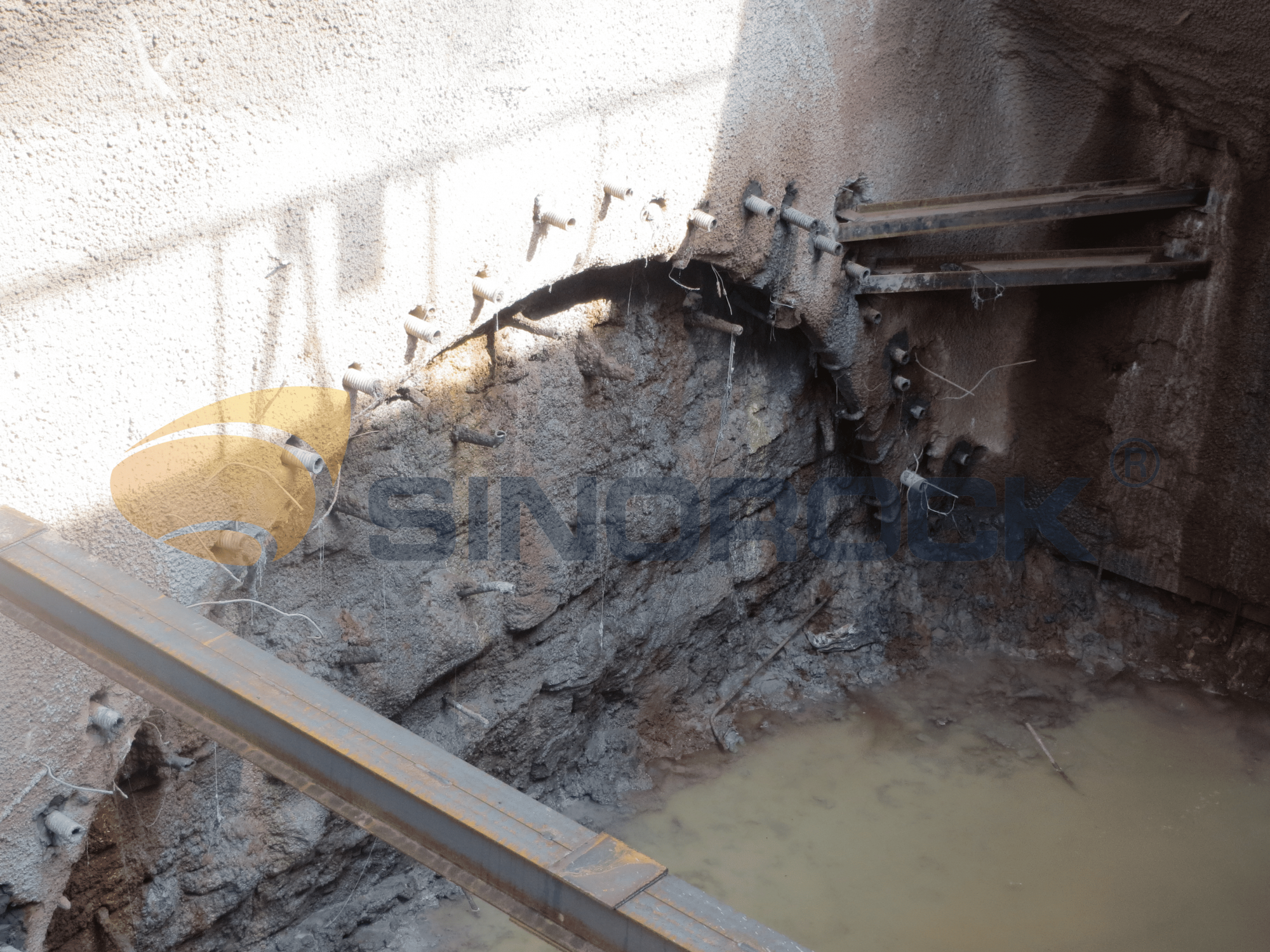
4. Monitoring and Quality Control
Throughout the construction process, a rigorous monitoring and quality control system was in place. Data on the self-drilling anchor bolt system's performance, ground movement, and stability were continuously collected and analyzed to ensure the effectiveness of the support system.
5. Results and Conclusions
Based on practical application, measurement, and monitoring data, the self-drilling anchor bolt system showcased exceptional performance in stabilizing the foundation pit. The successful completion of Beijing Subway Line 4's construction using this system stands as a testament to its feasibility and reliability in challenging sandy cobble strata.
Conclusion
The construction of Beijing Subway Line 4 serves as an excellent example of the effectiveness and benefits of the self-drilling anchor bolt system in deep excavation projects, particularly in sandy cobble stratum. The integration of drilling, grouting, and anchoring functions ensures a safe, reliable, and time-efficient construction process, ultimately reducing costs and improving project outcomes. As the demand for underground spaces continues to rise, the self-drilling anchor bolt system represents a valuable tool for stabilizing large-scale underground structures in various geological conditions. Its successful application in the Beijing Subway Line 4 project highlights its potential to revolutionize the future of deep excavation construction.
latest cases
-
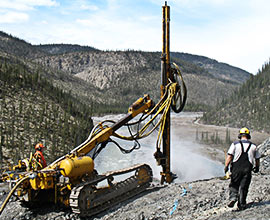
- The Application of Self Drilling Anchor Bolt at the Tala Hydro Project for Tunneling in Poor Rock Mass Conditions
- Time:2024-07-30From:This Site
- The Tala hydroelectric project is located in Chukha Dzongkhag in western Bhutan. The dam site is in the Thimphu gneiss, and the section of HRT up to 14km downstream from C-1 is in gneiss with quartzite bands and biotite schists. There are joint sets, and the rock is highly faulted, with foliation shears of varying thickness up to 30cm. From 14km to 23km, the rock type is biotite gneiss with bands of quartzite, mica schist, and sericite-schist with amphibolite. Rock conditions merit 3 - 4 on the NGI Q system, with pretty poor conditions affecting parts of C2, C-3 and all of C-4. The rock format
- View details
-
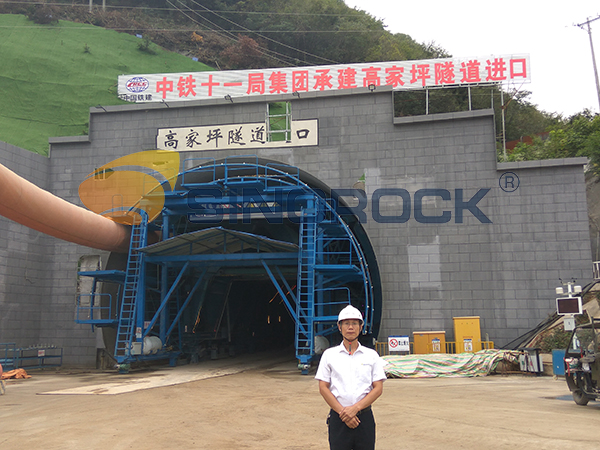
- Pre-support with Pipe Umbrella System for Gaojiaping Tunnel
- Time:2022-08-04From:This Site
- The success of the Gaojiaping Tunnel's construction demonstrates the ingenuity of Sinorock's self-drilling anchor system. It not only overcame the geological challenges but also enhanced safety and efficiency in tunnel construction. As China's infrastructure projects continue to push boundaries, Sinorock's commitment to professionalism and reliable products ensures a safer and more efficient future.
- View details
-
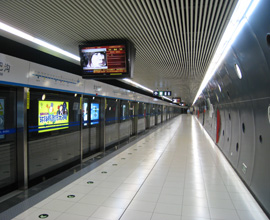
- The Construction Method of Self Drilling Anchor Bolt in Sandy Gravel Deep Excavation
- Time:2015-10-22From:This Site
- With the exploitation of the underground space in cities and the large scale construction of the underground retail spaces, the deep excavation projects is becoming more and more.
- View details
-
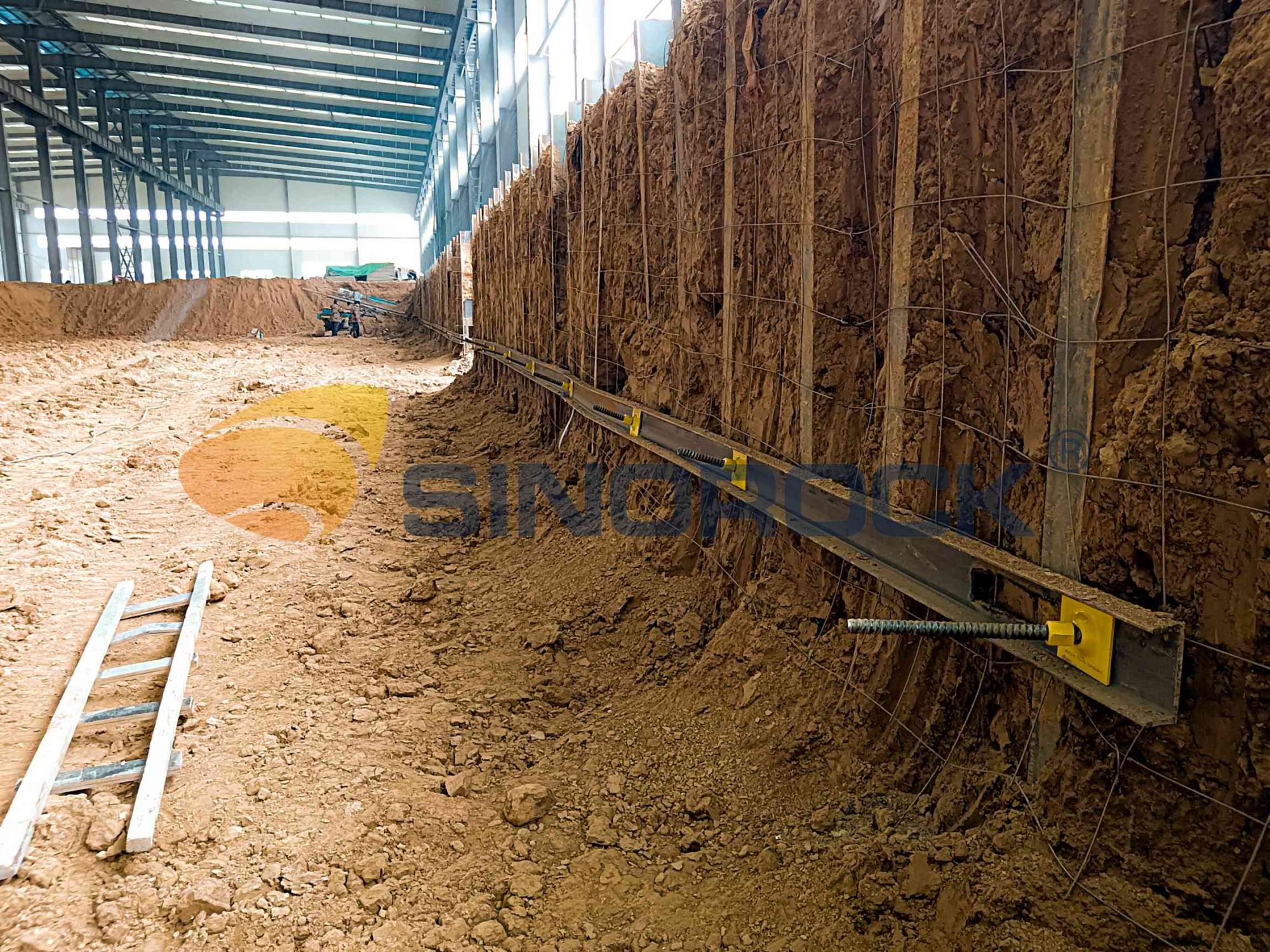
- Foundation Support for Hongji Group's High-end Packaging Materials Project
- Time:2023-10-20From:This Site
- Hongji Group's High-end Packaging Materials Project in Linqing City, Shandong Province, serves as a vivid example of how Sinorock's representative R32 self-drilling hollow helical anchor bolts played an instrumental role in supporting the foundation of a high-stakes industrial endeavor.
- View details
-
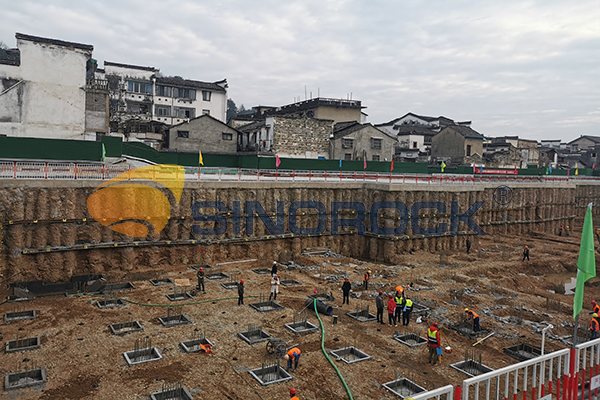
- Binjiang West Road Pedestrian Mall Project
- Time:2022-07-15From:This Site
- The project requires a shorter construction period and lower cost. After multiple rounds of plan review, the project party finally decided to adopt a self-drilling anchor system, using simultaneous drilling and grouting construction processes.
- View details
-
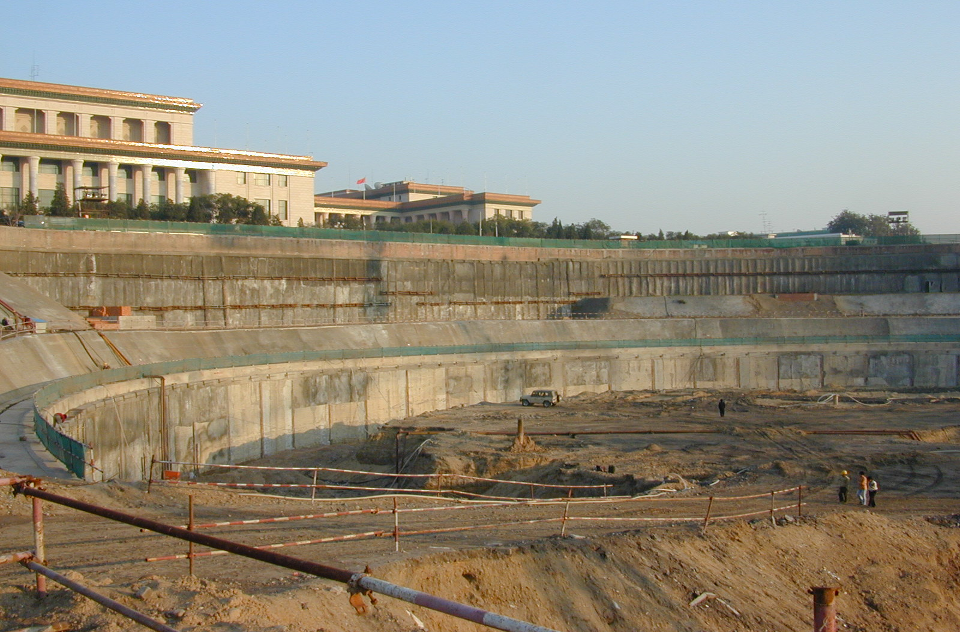
- The Application of Self Drilling Anchor Bolt in Beijing Oriental Plaza Foundation Support Project
- Time:2015-08-20From:This Site
- In the realm of modern construction and engineering, the utilization of cutting-edge technologies and innovative methodologies is paramount to overcoming the challenges posed by complex geological conditions and formidable project scopes. A prime testament to this is the remarkable application of a self-drilling anchor system in the monumental Beijing Oriental Plaza Foundation Support Project.
- View details
-
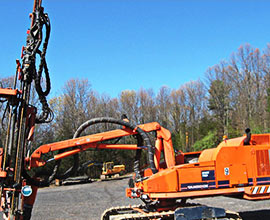
- Enhancing Slope Stabilization at the Left Bank of Xiluodu Hydropower Station with Self-Drilling Anchor Bolts
- Time:2024-10-18From:This Site
- Slope stabilization in challenging geological conditions has always been a daunting task for engineers and construction experts. In the case of the Left Bank of Xiluodu Hydropower Station, where complex geological stratifications and a short construction period posed significant challenges, the innovative application of self-drilling anchor bolts emerged as a game-changer.
- View details
-
.jpg)
- Xingyi Normal University for Nationalities Retaining Wall Reinforcement
- Time:2023-09-21From:This Site
- The Xingyi Normal University for Nationalities Retaining Wall Reinforcement project stands as a testament to the capabilities and effectiveness of Sinorock's self-drilling anchor system in addressing even the most challenging slope stabilization tasks.
- View details
-
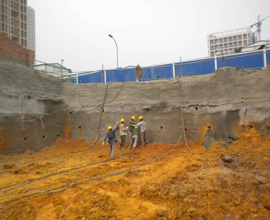
- The Slope Support Project of Dong Miao Residential Area in Ji Nan
- Time:2015-10-30From:This Site
- In the ever-growing urban landscape, the challenge of stabilizing slopes and ensuring the safety of residents is of paramount importance. The success story of the Slope Support Project in the Dong Miao Residential Area, situated in the heart of Ji Nan, serves as a beacon of innovation and engineering excellence. The application of the cutting-edge Self-Drilling Anchor Bolt System has not only ensured the stability of the slopes but has also set a new standard in slope stabilization.
- View details
 Download
Download 


